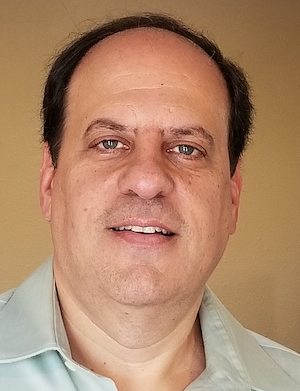Feature Articles
HHS Releases Landmark Report: Reforming America's Healthcare System
 On December 3, 2018, the Department of Health and Human Services (HHS) released an extensive, 120-page report on the administration's proposals to reform the healthcare system. The report, titled Reforming America's Healthcare System Through Choice and Competition, is divided into four major sections. The report that government policy of the last few years has suppressed competition, increased prices for healthcare, and limited choices for consumers. Though rich in detail as it tries to prove each of these points, the more than fifty recommendations are often broad and aspirational rather than practical. Since I am not a health economist, I will leave the market issues to others to discuss (many of the ideas in this report have been vetted and discussed by others previously). But there are two sections of the report which make direct mention of Health IT.
On December 3, 2018, the Department of Health and Human Services (HHS) released an extensive, 120-page report on the administration's proposals to reform the healthcare system. The report, titled Reforming America's Healthcare System Through Choice and Competition, is divided into four major sections. The report that government policy of the last few years has suppressed competition, increased prices for healthcare, and limited choices for consumers. Though rich in detail as it tries to prove each of these points, the more than fifty recommendations are often broad and aspirational rather than practical. Since I am not a health economist, I will leave the market issues to others to discuss (many of the ideas in this report have been vetted and discussed by others previously). But there are two sections of the report which make direct mention of Health IT.
2019 Forecast: Amara's Law: Health Data, Gene Editing, and Artificial Intelligence
 I have two predictions for 2019. One is that at the end of 2019 our healthcare system will still look a lot like it looks now. Oh, sure, we'll see some cool new technologies, some innovative start-ups, some surprising corporate pairings, some moves by Big Tech, and some promising clinical findings. But our healthcare system moves slowly, and many in it have strongly vested interests in the status quo. The second prediction is that, more than ever, Amara's Law still prevails. In case you don't know this "law," it is attributed to Roy Amara, who was President of the Institute for the Future, among other things, and goes like this...
I have two predictions for 2019. One is that at the end of 2019 our healthcare system will still look a lot like it looks now. Oh, sure, we'll see some cool new technologies, some innovative start-ups, some surprising corporate pairings, some moves by Big Tech, and some promising clinical findings. But our healthcare system moves slowly, and many in it have strongly vested interests in the status quo. The second prediction is that, more than ever, Amara's Law still prevails. In case you don't know this "law," it is attributed to Roy Amara, who was President of the Institute for the Future, among other things, and goes like this...
A Public Health Perspective on ONC's Strategy to Reduce Burden on Physicians
 On November 28, 2018, the Office of the National Coordinator for Health Information Technology (ONC) released a draft Strategy on Reducing Regulatory and Administrative Burden Relating to the Use of Health IT and EHRs for public comment. The strategy aims to reduce the time and effort and improve the functionality of electronic health records (EHRs) for clinicians, hospitals, and other healthcare organizations. This strategy was developed primarily through the efforts of ONC-convened workgroups in response to requirements laid out by Congress in the 21st Century Cures Act (Section 13103). The report itself does not identify who exactly served on these workgroups and what organizations were represented.
On November 28, 2018, the Office of the National Coordinator for Health Information Technology (ONC) released a draft Strategy on Reducing Regulatory and Administrative Burden Relating to the Use of Health IT and EHRs for public comment. The strategy aims to reduce the time and effort and improve the functionality of electronic health records (EHRs) for clinicians, hospitals, and other healthcare organizations. This strategy was developed primarily through the efforts of ONC-convened workgroups in response to requirements laid out by Congress in the 21st Century Cures Act (Section 13103). The report itself does not identify who exactly served on these workgroups and what organizations were represented.
j2 Cloud Services to Showcase Secure Cloud Fax Solutions at HIMSS 2019
 j2 Cloud Services™, a world-leading provider of digital cloud fax solutions, will showcase its portfolio of "interoperable" secure cloud fax solutions, including eFax Corporate, Sfax and MyFax, at the 2019 Healthcare Information and Management Systems Society (HIMSS) Annual Conference & Exhibition. As a HIMSS Emerald member, eFax Corporate's presence at HIMSS is slated to be one of its strongest ever! The j2 Cloud Services portfolio of all-digital cloud fax solutions, including eFax Corporate, Sfax and MyFax, replaces the need for antiquated analog fax machines and paper-based faxing with an online document transfer service that is both secure and HIPAA compliant.
j2 Cloud Services™, a world-leading provider of digital cloud fax solutions, will showcase its portfolio of "interoperable" secure cloud fax solutions, including eFax Corporate, Sfax and MyFax, at the 2019 Healthcare Information and Management Systems Society (HIMSS) Annual Conference & Exhibition. As a HIMSS Emerald member, eFax Corporate's presence at HIMSS is slated to be one of its strongest ever! The j2 Cloud Services portfolio of all-digital cloud fax solutions, including eFax Corporate, Sfax and MyFax, replaces the need for antiquated analog fax machines and paper-based faxing with an online document transfer service that is both secure and HIPAA compliant.
Creating EHRs that Doctors Don't Hate
 It may be difficult to recall now, what with the ongoing Cerner deployment and recent challenges that had little to do with technology, but there was a time when the Department of Veterans Affairs was considered the gold standard for healthcare IT. VA was out front with the initial development in the 1970s of the VistA system, which would come to be widely recognized and frequently honored. Indeed, when VA was overhauled in the 1990s, VistA was the primary tool that enabled the success of new policies. Without question, much of the effectiveness and durability of VA's VistA can be attributed to the way it was developed, specifically to the collaboration between technologists and clinicians that defined the process.
It may be difficult to recall now, what with the ongoing Cerner deployment and recent challenges that had little to do with technology, but there was a time when the Department of Veterans Affairs was considered the gold standard for healthcare IT. VA was out front with the initial development in the 1970s of the VistA system, which would come to be widely recognized and frequently honored. Indeed, when VA was overhauled in the 1990s, VistA was the primary tool that enabled the success of new policies. Without question, much of the effectiveness and durability of VA's VistA can be attributed to the way it was developed, specifically to the collaboration between technologists and clinicians that defined the process.
The risks and rewards of IoT in healthcare
 The Internet of Things (IoT) is taking the industries of the world by storm, and the healthcare sector is no exception. With 101 million IoT devices worldwide, the healthcare industry is becoming more connected by the day, and this figure is expected to increase by over 62% by 2020. As is always the case with new technology, the growing presence of IoT in the healthcare industry poses several threats to both patients and providers - but do the rewards outweigh the risks? Firstly, let's explore some of the key benefits that IOT can bring to healthcare:
The Internet of Things (IoT) is taking the industries of the world by storm, and the healthcare sector is no exception. With 101 million IoT devices worldwide, the healthcare industry is becoming more connected by the day, and this figure is expected to increase by over 62% by 2020. As is always the case with new technology, the growing presence of IoT in the healthcare industry poses several threats to both patients and providers - but do the rewards outweigh the risks? Firstly, let's explore some of the key benefits that IOT can bring to healthcare:
How are Clinical Decision Support Artifacts Tested Today?
 In October 2018 the Centers for Disease Control and Prevention (CDC) issued a Request for Information (RFI) for a Natural Test Collaborative (NTC). Through a series of questions, the RFI seeks opinions and information about "The development of a national testbed (notionally called the National Test Collaborative (NTC)) for real-world testing of health information technology (IT)" and "Approaches for creating a sustainable infrastructure" to achieve it. The scope of this RFI is daunting. It might be useful, rather than to try to tackle this whole topic broadly but superficially, to take just one Clinical Decision Support (CDS) domain and show as completely as possible how testing is currently done.
In October 2018 the Centers for Disease Control and Prevention (CDC) issued a Request for Information (RFI) for a Natural Test Collaborative (NTC). Through a series of questions, the RFI seeks opinions and information about "The development of a national testbed (notionally called the National Test Collaborative (NTC)) for real-world testing of health information technology (IT)" and "Approaches for creating a sustainable infrastructure" to achieve it. The scope of this RFI is daunting. It might be useful, rather than to try to tackle this whole topic broadly but superficially, to take just one Clinical Decision Support (CDS) domain and show as completely as possible how testing is currently done.
The Microsoft Empire Strikes Back: Makes Major Inroads into Healthcare
 It seems deeply ironic that a week after I wrote about how even giant companies eventually get surpassed, I'm writing about the resurgence of one such giant, Microsoft. Last week Microsoft won back the title of world's most valuable company (as measured by market cap), passing Apple. Apple had that distinction since 2012; Microsoft hasn't had it since 2002. Admittedly, Microsoft was only able to pass Apple because a recent tech stock downturn dropped Apple from its record trillion-dollar valuation, and, as of this writing, Apple has pulled back in front again, but the fact that it is a race again says a lot about Microsoft.
It seems deeply ironic that a week after I wrote about how even giant companies eventually get surpassed, I'm writing about the resurgence of one such giant, Microsoft. Last week Microsoft won back the title of world's most valuable company (as measured by market cap), passing Apple. Apple had that distinction since 2012; Microsoft hasn't had it since 2002. Admittedly, Microsoft was only able to pass Apple because a recent tech stock downturn dropped Apple from its record trillion-dollar valuation, and, as of this writing, Apple has pulled back in front again, but the fact that it is a race again says a lot about Microsoft.
Five Tech Trends Affecting Healthcare IT Today, and Tomorrow
 Technology is evolving faster than ever before, and shows no sign of slowing down. Digital innovation has enhanced the way we operate in almost every aspect of modern life, but in the healthcare industry, technology is not only changing lives, it's saving them too. Outlined below are five technology trends that are taking hold of the healthcare IT industry today, and what developments we can expect to see over the course of 2019 and beyond.
Technology is evolving faster than ever before, and shows no sign of slowing down. Digital innovation has enhanced the way we operate in almost every aspect of modern life, but in the healthcare industry, technology is not only changing lives, it's saving them too. Outlined below are five technology trends that are taking hold of the healthcare IT industry today, and what developments we can expect to see over the course of 2019 and beyond.
3 Emerging Tipping Points in Open Source
 Over the last two decades, open source has been expanding into all aspects of technology-from software to hardware; from small, disruptive startups to large, boring enterprises; from open standards to open patents. As movements evolve, they reach tipping points-stages that move the model in new directions. Following are three things that I believe are now reaching a tipping point in open source. As the name suggests, the open source model has mainly been focused on the source code. On the surface, that's probably because open source communities are usually made up of developers working on the source code, and the tools used in open source projects, such as source control systems, issue trackers, mailing list names, chat channel names, etc., all assume that developers are the center of the universe.
Over the last two decades, open source has been expanding into all aspects of technology-from software to hardware; from small, disruptive startups to large, boring enterprises; from open standards to open patents. As movements evolve, they reach tipping points-stages that move the model in new directions. Following are three things that I believe are now reaching a tipping point in open source. As the name suggests, the open source model has mainly been focused on the source code. On the surface, that's probably because open source communities are usually made up of developers working on the source code, and the tools used in open source projects, such as source control systems, issue trackers, mailing list names, chat channel names, etc., all assume that developers are the center of the universe.
CDC Issues RFI for Real-world Testing of Health Information Technology
 In October the Centers for Disease Control and Prevention (CDC) issued a Request for Information (RFI) for a Natural Test Collaborative (NTC). Through a series of questions, the RFI seeks opinions and information about "The development of a national testbed (notionally called the National Test Collaborative (NTC)) for real-world testing of health information technology (IT)" and "Approaches for creating a sustainable infrastructure" to achieve it. The scope of the questions is somewhat confusing and quite broad, starting with Clinical Decision Support (CDS) and electronic Clinical Quality Measures (eCQMs) but quickly expanding to Electronic Health Records (EHR) and interoperability (not precisely defined).
In October the Centers for Disease Control and Prevention (CDC) issued a Request for Information (RFI) for a Natural Test Collaborative (NTC). Through a series of questions, the RFI seeks opinions and information about "The development of a national testbed (notionally called the National Test Collaborative (NTC)) for real-world testing of health information technology (IT)" and "Approaches for creating a sustainable infrastructure" to achieve it. The scope of the questions is somewhat confusing and quite broad, starting with Clinical Decision Support (CDS) and electronic Clinical Quality Measures (eCQMs) but quickly expanding to Electronic Health Records (EHR) and interoperability (not precisely defined).
The Big Get Bigger, Until They Don't
 You may have missed it, but the Open Markets Institute released a report on what it calls "America's Concentration Crisis." The report begins bluntly: "Monopoly power is all around us: as consumers, business owners, employees, entrepreneurs, and citizens." As David Leonhardt wrote in his op-ed about the report, "The federal government, under presidents of both parties, has largely surrendered to monopoly power." Their associated data set details market concentration within 32 industries, several of which are health related. For example, in electronic health record systems, the top 3 firms account for 58% of the market, whereas in pharmacies/drugstores, the top 3 control 67% (and the top 2 alone have 61% share).
You may have missed it, but the Open Markets Institute released a report on what it calls "America's Concentration Crisis." The report begins bluntly: "Monopoly power is all around us: as consumers, business owners, employees, entrepreneurs, and citizens." As David Leonhardt wrote in his op-ed about the report, "The federal government, under presidents of both parties, has largely surrendered to monopoly power." Their associated data set details market concentration within 32 industries, several of which are health related. For example, in electronic health record systems, the top 3 firms account for 58% of the market, whereas in pharmacies/drugstores, the top 3 control 67% (and the top 2 alone have 61% share).
Bio-Linux: A Stable, Portable Scientific Research Linux Distribution
 Bio-Linux was introduced and detailed in a Nature Biotechnology paper in July 2006. The distribution was a group effort by the Natural Environment Research Council in the UK. As the creators and authors point out, the analysis demands of high-throughput "-omic" (genomic, proteomic, metabolomic) science has necessitated the development of integrated computing solutions to analyze the resultant mountains of experimental data. From this need, Bio-Linux was born. The distribution, according to its creators, serves as a "free bioinformatics workstation platform that can be installed on anything from a laptop to a large server." The current distro version, Bio-Linux 8, is built on an Ubuntu 14.04 LTS base. Thus, the general look and feel of Bio-Linux is similar to that of Ubuntu.
Bio-Linux was introduced and detailed in a Nature Biotechnology paper in July 2006. The distribution was a group effort by the Natural Environment Research Council in the UK. As the creators and authors point out, the analysis demands of high-throughput "-omic" (genomic, proteomic, metabolomic) science has necessitated the development of integrated computing solutions to analyze the resultant mountains of experimental data. From this need, Bio-Linux was born. The distribution, according to its creators, serves as a "free bioinformatics workstation platform that can be installed on anything from a laptop to a large server." The current distro version, Bio-Linux 8, is built on an Ubuntu 14.04 LTS base. Thus, the general look and feel of Bio-Linux is similar to that of Ubuntu.
Get Smart, Integrate Artificial Intelligence into Your Business, Sooner
 We've moved from the Computer Information Age to the "Digital Data Artificial Intelligence Age." It's the 4th Industrial Revolution. Just as computers transformed business processes and created the need for an "Information Technology Strategy." Today an integrated enterprise "Business - IT - Big Data - AI Strategy" is essential to lower costs and expand markets through differentiated products and services. The Artificial Intelligence strategy is not an add-on. It needs to be a core element of your enterprise strategic plan in 2019 and beyond!
We've moved from the Computer Information Age to the "Digital Data Artificial Intelligence Age." It's the 4th Industrial Revolution. Just as computers transformed business processes and created the need for an "Information Technology Strategy." Today an integrated enterprise "Business - IT - Big Data - AI Strategy" is essential to lower costs and expand markets through differentiated products and services. The Artificial Intelligence strategy is not an add-on. It needs to be a core element of your enterprise strategic plan in 2019 and beyond!
Is the US Finally Ready to Get Serious About Biodefense?
 Biological and other disaster threats - whether accidental, driven by forces of nature, or intentional - pose fairly grave risks to the United States and the world. Situational awareness has been a conspicuous topic ever since the 9/11 attacks and the anthrax scare that followed shortly thereafter. Since then we have experienced numerous disasters: health impacts of major weather events such as hurricanes and earthquakes, new virus outbreaks like Ebola in Africa, raging wildfires on the West Coast (I live in California), and the ever-present threat of pandemic flu which a hundred years ago infected some 500 million people across the globe and killed an estimated 50 million people worldwide, according to the Center for Disease Control and Preparedness (CDC). But since the initial flurry of public health preparedness funds in the ensuing several years after the 9/11 attacks, this topic has not had a high priority at CDC nor the funding necessary to implement it successfully.
Biological and other disaster threats - whether accidental, driven by forces of nature, or intentional - pose fairly grave risks to the United States and the world. Situational awareness has been a conspicuous topic ever since the 9/11 attacks and the anthrax scare that followed shortly thereafter. Since then we have experienced numerous disasters: health impacts of major weather events such as hurricanes and earthquakes, new virus outbreaks like Ebola in Africa, raging wildfires on the West Coast (I live in California), and the ever-present threat of pandemic flu which a hundred years ago infected some 500 million people across the globe and killed an estimated 50 million people worldwide, according to the Center for Disease Control and Preparedness (CDC). But since the initial flurry of public health preparedness funds in the ensuing several years after the 9/11 attacks, this topic has not had a high priority at CDC nor the funding necessary to implement it successfully.